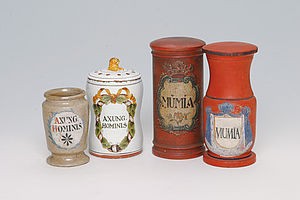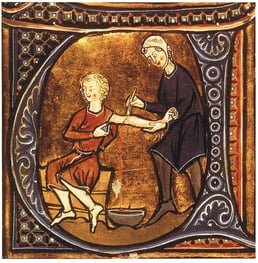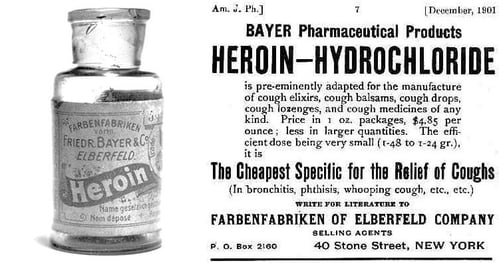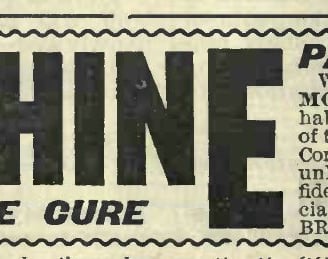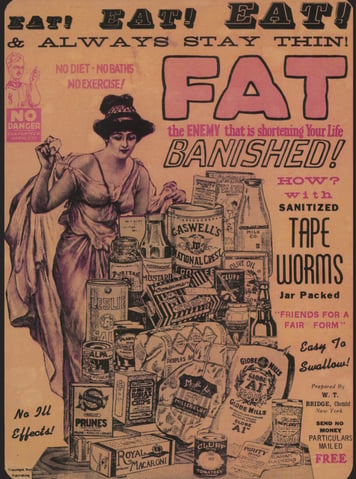Medieval Medical Misadventures
Lets take a few minutes to thank modern medicine and look at some popular medical practices back in the day, that would definitely be frowned upon today.
MMM
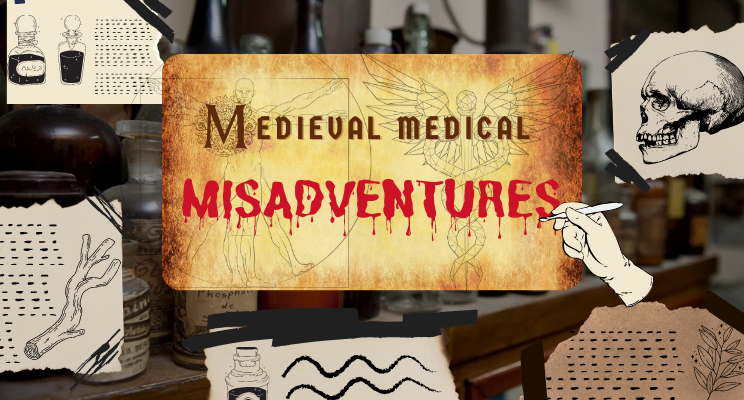

The Alliteration in the title, interesting as it may be, is actually a reminder of the mistakes of our predecessors, who in their quest to help the ailing, may have done more harm than good. From draining out blood to ingesting tapeworms, here are some nuggets of history which will reinforce your gratitude for the progress made by mankind in the medical world.
"It's through mistakes that you actually can grow. You have to get bad in order to get good" - Paula Scher
Nevertheless, be kind in judging the medical fraternity of the past, as their misbeliefs paved the path towards a scientific temper and thus the philosophy of “Once, Questioning everything around you!”.
Let’s dig in, shall we?
1. Want a piece of me?
Digging brings me to the 15th century, European practice of digging up graves for the preparation of mumia, a brown paste/powder of mummified human flesh, prepared with special "recipes", used to treat epilepsy, nausea, haemorrhage and was a miraculous cure-all treatment.
As horrifying as it may sound, mumia wasn't the only instance of the human body being used in medicine. Human blood, liver, gall bladder, oil distilled from the human brain and pulverized human hearts were all used for various treatments. Lemery’s Medical Dictionary, a standard authority all over Europe in the 18th century, lists virtually all parts of the human body, and bodily products, for medicinal use.
2. Tears, sweat and BLOOD
Blood is a recurring theme in this article, but this time it is drained out. Blood-letting or phlebotomy, or literally bleeding out from an incision, was the most commonly performed procedure until the 19th Century as a treatment for everything from a headache to a stroke, as illness was attributed to the imbalance of the 4 humours (black bile, yellow bile, blood and phlegm) and removing any excess was the idea. However, the only instance where it has been said to work, unintentionally albeit, was in cases of hypertension, reducing the patient’s blood pressure by reducing blood volume.
Although blood-letting was harmful to most of the people who underwent it, it remained a popular treatment. Today, phlebotomy is used to draw blood for tests, transfusion procedures and to treat hemochromatosis and polycythaemia but the mediaeval practice of draining blood is considered a pseudoscience.
3. Baby crying a bit too much? Here’s a lil something!
Opium was well known in prehistoric and ancient times as an analgesic. Opioids are highly addictive compounds and are used today to relieve pain in extremely regulated and specific medical conditions, however that was not the case always and there was a period when Morphine, Codeine and Heroin were prescribed and made available freely, over-the-counter in the form of tinctures like Laudanum. If that wasn’t enough these opioids were used to treat the many maladies of infants and children!
Cocaine extracted from Coca plants (Erythroxylum coca) was also unregulated and was advertised as an analgesic for children. These medical practices may have been the reason behind the high heroin addiction rates in the US and western Europe.
Remember kids, don’t do drugs!
4. Mmm Worms!
Tapeworms and tapeworm eggs were popularized as an easy way to lose a few extra kilos. Unsurprisingly this did not work, but it did cause other complications of the abdomen and rectum. Tapeworms can grow up to 30 feet (9m) in length and cause many illnesses including headaches, eye problems, meningitis, epilepsy and dementia. So remember kids don’t do worms either!
With our current understanding of medicine and physiology we may be tempted to laugh at such treatments. But what will future physicians think of our medical practice 100 years from now? They may be baffled by our overuse of antibiotics and the bluntness of treatments like radiation, chemotherapy or faecal transplantation.
We can expect that with advances in medical knowledge our diagnoses become more refined and our treatments less invasive. Until then, we can nurture our drive to do better and our longing for scientific truth. Stay curious!
Written by: Saakshi Methe
References:
Andrew et al. “Opioids and the treatment of chronic pain: controversies, current status, and future directions.” Experimental and clinical psychopharmacology vol. 16,5 (2008): 405-16. doi:10.1037/a0013628
Gordon-Grube, Karen. “Anthropophagy in Post-Renaissance Europe: The Tradition of Medicinal Cannibalism.” American Anthropologist, vol. 90, no. 2, 1988, pp. 405–409. JSTOR, www.jstor.org/stable/677961. Accessed 28 Nov. 2020.
“A Brief History of Cannibalism - Bill Schutt.” YouTube, uploaded by TED-Ed, 25 July 2019, www.youtube.com/watch?v=Y2ODPFiksBE.
Gordon, Olivia. “Why Do Some Doctors Still Use Bloodletting?” YouTube, uploaded by SciShow, 25 Oct. 2018, www.youtube.com/watch?v=3ymSgO26YW8.
Gerry Greenstone, MD,. The history of bloodletting. BCMJ, Vol. 52, No. 1, January, February, 2010, Page(s) 12-14 - Premise.
McElroy, Sydnee, and Justin McElroy. “Opium.” Maximum Fun, Maximum Fun, 5 June 2020, maximumfun.org/episodes/sawbones/sawbones-opium/.
Winterman, Denise. “History’s Weirdest Fad Diets.” BBC News, 2 Jan. 2013, www.bbc.com/news/magazine-20695743.
Images:
https://www.deutsches-apotheken-museum.de/fileadmin/_processed_/e/9/csm_4_Mensch_d970491c9a.jpg
https://miro.medium.com/max/1050/0*hgdmbuUS7IqoVtlw.jpg
https://upload.wikimedia.org/wikipedia/commons/3/33/MorphineAdvertisement1900.JPG
https://www.nlm.nih.gov/exhibition/pickyourpoison/img/exhibition-OB2033-thumb.jpg
